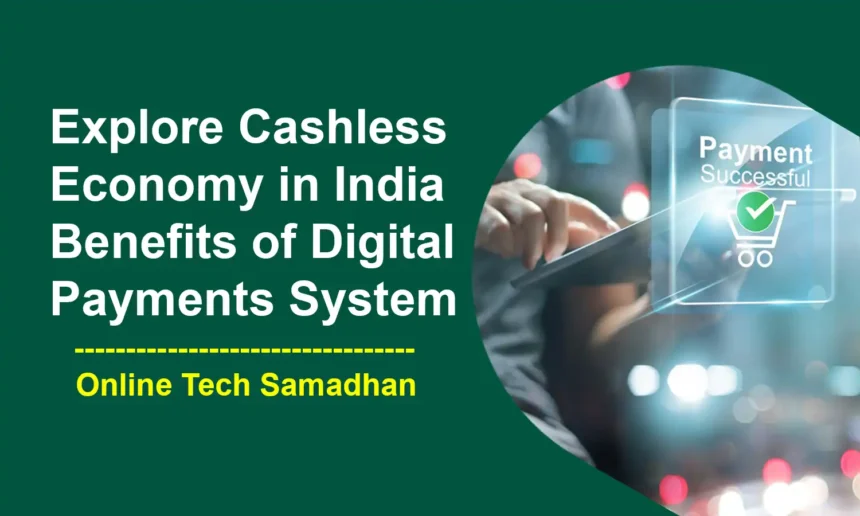Embracing Digital Payments for a Better Future: A Look into Cashless Economy in India
India, a country known for its rich culture and traditions, is gradually embracing a cashless economy. This shift involves moving away from traditional cash transactions and adopting digital payment methods. In this post, we will explore what the Cashless Economy in India means, why it is gaining momentum in India, and the benefits and challenges associated with this transformation.
What is a Cashless Economy?
A cashless economy refers to a system where people rely more on digital transactions rather than physical cash. Instead of exchanging paper currency, individuals and businesses use digital platforms like smartphones, computers, and electronic transfers to make payments.

Factors driving Cashless Economy in India
Several factors have contributed to the increasing popularity of digital payments in India:
You May Love To Read
- Google Ka Account Kaise Banaye: Step-by-Step Guide in Hindi
- How to View and Download SBI Mutual Fund Statement 2024
- Documents update in Aadhaar Keep Your Information Up-to-Date
- MyLiveCricket Not Working Try CricHD Live for ICC World Cup 2024 Live
- CRSORGi CSC Birth & Death Certificate Application Guide 2024
- Government initiatives: The Indian government has launched initiatives like Digital India, Jan Dhan Yojana, and demonetization, which promote digital transactions, financial inclusion, and combat black money.
- Advancement in technology: With the availability and affordability of smartphones, internet access, and digital payment platforms, it has become easier for people to access and use digital payment methods.
- Convenience and efficiency: Digital transactions offer convenience and efficiency by reducing the need for physical cash, making transactions quicker, and providing a transparent record of financial activities.

Benefits of Cashless Economy in India
The transition to a cashless economy in India brings several advantages:
- Transparency and accountability: Digital transactions leave a clear digital trail, making it easier to track financial activities and reducing the scope for corruption.
- Financial inclusion: Digital payment platforms provide access to financial services for individuals who were previously unbanked or underserved, promoting financial inclusion.
- Cost-saving: Digital transactions eliminate the costs associated with printing and distributing physical currency, leading to resource savings for the government.
- Increased tax compliance: Digital payments encourage greater tax compliance as transactions become traceable, broadening the tax base and increasing government revenue.
Challenges and Concerns on Cashless Economy in India:
While the move towards a cashless economy holds promise, it also presents challenges:
- Digital divide: Unequal access to technology and internet connectivity hinders the adoption of digital transactions, particularly among rural communities and marginalized groups.
- Cybersecurity risks: The rise in digital transactions increases the risk of cyber fraud and unauthorized access to personal financial information. Ensuring robust cybersecurity measures is crucial to protect individuals from online threats.
- Mindset and trust: Changing people’s mindset about relying on cash and building trust in digital payment systems are vital for the successful transition to a cashless economy.
Conclusion:
The shift towards a cashless economy in India offers numerous benefits, including transparency, financial inclusion, cost-saving, and increased tax compliance. However, it is essential to address challenges such as the digital divide and cybersecurity risks. With continued government support, technological advancements, and awareness campaigns, India can successfully embrace a cashless future. This transition will have a positive impact on the economy, streamline financial transactions, and empower individuals and businesses across the nation.
























